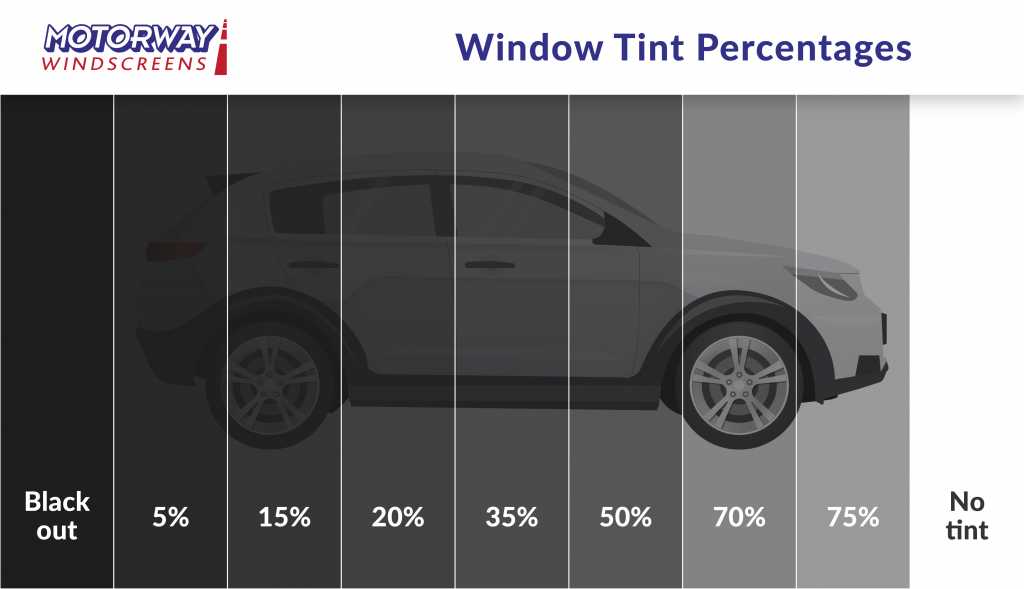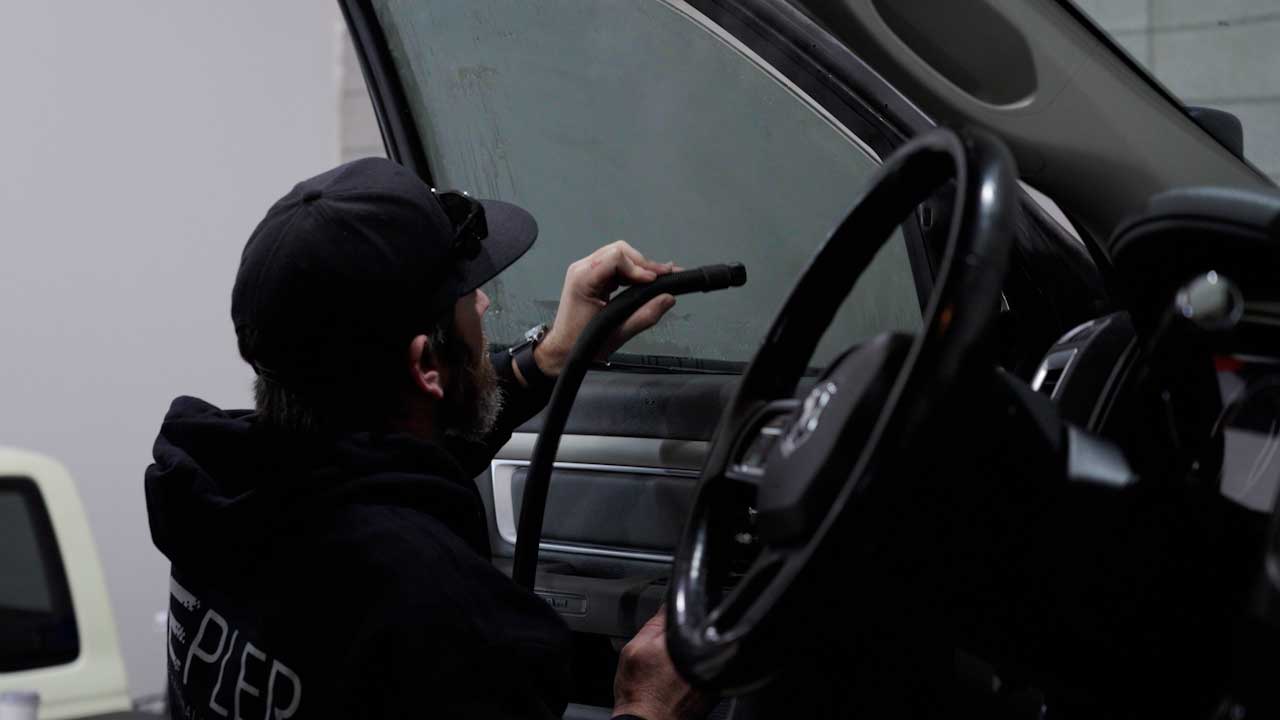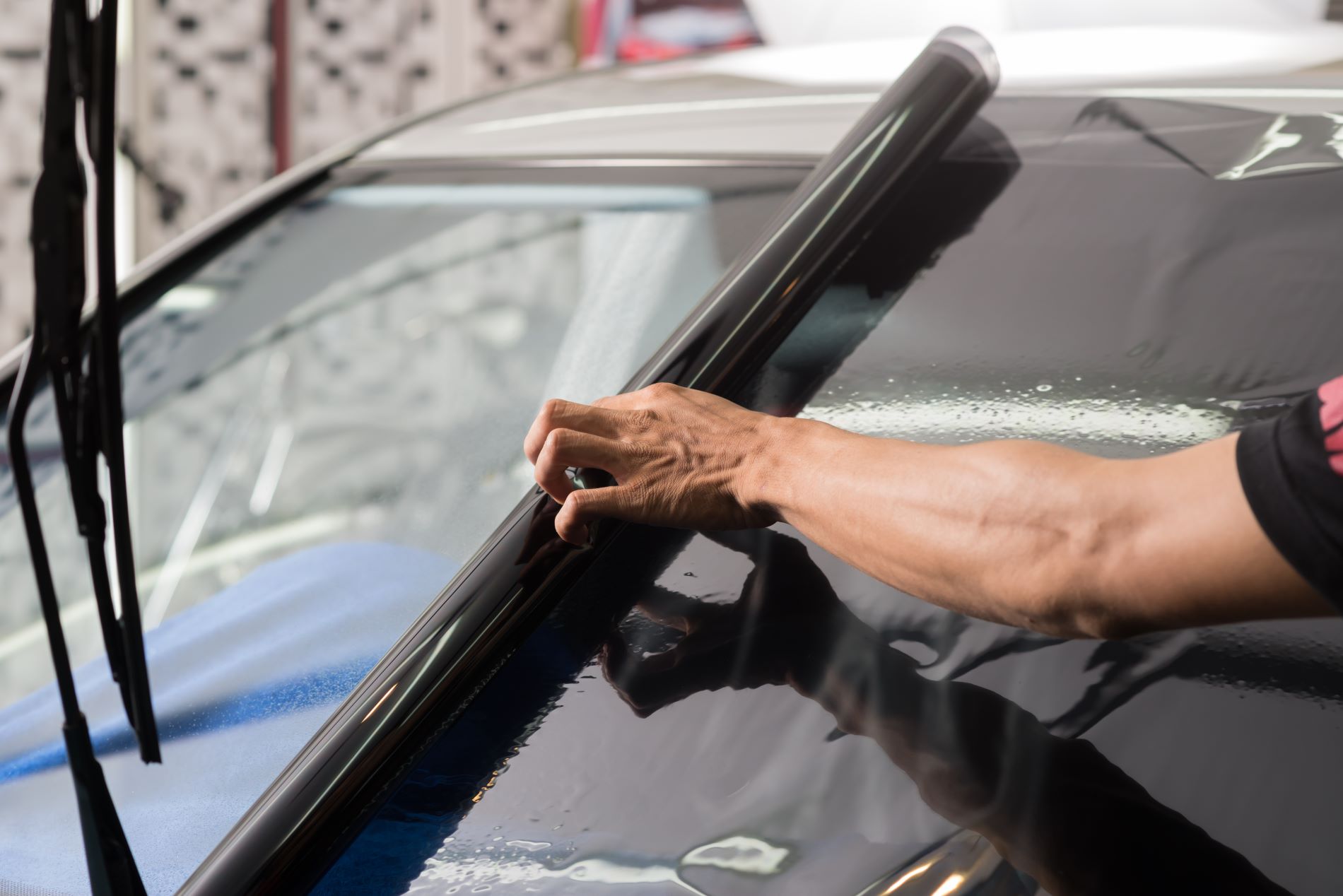How Car Glass Tinting Can Increase Your Car’s Resale Value
Wiki Article
A Comprehensive Guide to Comprehending Automobile Window Tint and Its Advantages
Car window tinting serves greater than simply an aesthetic function for lorries. It supplies various types, each with distinct features and advantages. Recognizing these alternatives, in addition to lawful laws and maintenance tips, is necessary for any type of automobile owner. The advantages may significantly improve driving comfort and lorry longevity. As one discovers the subtleties of window tinting, the question arises: what type of color is ideal fit for individual demands?Recognizing Vehicle Home Window Color: What It Is and Just how It Functions
Automobile window tint functions as a safety obstacle that improves car aesthetics while providing practical benefits. This thin movie is put on the interior surface of auto home windows, reducing glare and obstructing hazardous ultraviolet (UV) rays from the sun. By filtering system sunshine, vehicle home window tint aids to manage the indoor temperature of the vehicle, causing increased convenience for passengers and minimized dependence on air conditioning.Additionally, it protects the car's interior from fading, maintaining both furniture and dashboard products. The tint can additionally enhance privacy, making it harder for outsiders to see inside the vehicle. Additionally, specific types of window color can increase safety; in case of a crash, the film helps hold destroyed glass together, decreasing the threat of injury from flying fragments. Generally, automobile home window color serves both aesthetic and useful objectives, making it a prominent option among car owners.Types of Window Tint: An Overview of Options
When taking into consideration window tint choices, numerous kinds are readily available, each with unique qualities. Colored, metalized, and ceramic home window colors offer varying levels of warm being rejected, UV defense, and visual allure. Recognizing these distinctions can help car owners make educated choices based upon their needs and choices.Dyed Home Window Tint
Dyed home window color stands for a popular option among auto owners looking for a affordable and effective way to improve their car's appearances and personal privacy. This kind of color is created by positioning a layer of color between a safety layer and a glue layer, causing a dark appearance that minimizes glare and boosts visual convenience. While dyed window color successfully blocks unsafe UV rays, it may not provide the very same level of warmth being rejected as various other tint kinds. In addition, its color can discolor over time, possibly decreasing its performance. Despite these disadvantages, colored window tint remains favored for its cost-effectiveness and capability to provide a smooth, elegant aim to numerous vehicle models.Metalized Home Window Tint
Metalized window color offers an equilibrium of design and functionality, making it a prominent selection amongst automobile owners. This kind of color integrates metal particles within the film, boosting both aesthetic allure and warm denial. The reflective high quality of metalized tint assists to reduce glare and enhance privacy, while likewise providing UV protection, which safeguards the car's interior. In addition, metalized window color can strengthen home window stamina, potentially stopping smashing throughout crashes. It is essential to note that the metallic components can interfere with digital signals, such as GPS and cell phone reception. Overall, metalized window color provides a reliable remedy for those looking for a mix of sturdiness, look, and sun defense for their vehicles.Ceramic Home Window Color
Ceramic home window color represents an innovative choice in the range of automobile window movies, supplying distinct advantages over traditional tints. Unlike colored or metalized movies, ceramic tints make use of sophisticated ceramic particles, which successfully deny warmth and UV rays without jeopardizing visibility. This technology assures that cars stay cooler, lowering reliance on cooling and boosting fuel performance. Furthermore, ceramic home window colors are less most likely to hinder digital tools, such as GPS or mobile signals, making them a useful selection for contemporary vehicles. Their longevity and scratch resistance add to a longer lifespan compared to other kinds of tints. Overall, ceramic window tint provides premium efficiency, comfort, and protection, making it a preferred option for critical vehicle owners.Advantages of Auto Home Window Color: Beyond Aesthetics
While several individuals associate car window color with improved style, its benefits prolong much beyond simple appearances. One considerable benefit is heat reduction; home window color can obstruct up to 99% of dangerous UV rays, protecting and maintaining the interior cooler upholstery from fading. This not just enhances comfort during warm climate but also lowers dependence on air conditioning, bring about enhanced fuel efficiency.In addition, automobile window color offers an included layer of personal privacy and safety and security. Tinted windows make it difficult for outsiders to see inside the vehicle, which can hinder burglary and secure belongings. Furthermore, many colors enhance the glass, reducing the likelihood of shattering in case of a crash, consequently improving safety.In addition to these useful benefits, vehicle home window color can also add to glare reduction, enhancing exposure for travelers and vehicle drivers alike. This complex technique to convenience and safety makes window tint a beneficial financial investment for automobile owners.Lawful Factors To Consider: Tinting Laws by State
Before devoting to vehicle window color, lorry proprietors need to browse a complex landscape of tinting guidelines that vary by state. Each state has particular regulations controling the permitted degrees of tint darkness and reflectivity for various home windows, consisting of windshields, front side windows, and rear home windows. These regulations typically include visible light transmission (VLT) percentages, which determine just how much light can pass with the tinted glass.Some states allow darker tints on rear windows while restricting front side and windshield colors for safety and security reasons. Furthermore, certain states may call for a certificate from the supplier to validate compliance with tinting regulations. Going against these guidelines can result in fines, obligatory removal of the color, or both. Consequently, it is necessary for automobile owners to research their state's regulations thoroughly to ensure legal compliance before mounting window tint. This persistance can save money and time in the lengthy run.Choosing the Right Tint: Elements to Take into consideration
When selecting the proper home window color for a vehicle, several important factors enter play. Color darkness degrees, UV defense rankings, and conformity with lawful laws are necessary factors to consider to assure both appearances and functionality - Car Glass Tinting. Examining these facets will certainly aid people make an educated decision that fulfills their needs and follows neighborhood legislationsColor Darkness Levels
Selecting the suitable tint darkness degree is important for achieving the desired balance between aesthetic appeals and functionality in automobile window tinting. Different states have differing legal laws relating to tint darkness, which can impact the choice. Usually, colors are measured in portions, with lower portions indicating darker shades. Darker tints offer increased privacy and a sleek appearance but can lower presence, specifically during the night. Alternatively, lighter colors preserve an even more open feeling, ensuring appropriate visibility while still providing some warm and glare decrease. Individuals must consider their driving routines, local regulations, and individual choices when choosing. Inevitably, the ideal tint darkness level enhances the automobile's look while ensuring safety and compliance with lawful criteria.UV Security Rating
Tint darkness degrees play a significant duty in the total performance of auto window tinting, yet another vital factor to examine is the UV security rating of the selected color. This rating shows the percentage of harmful ultraviolet rays that the color can block. Top quality tints frequently offer 99% or even more UV protection, securing guests and the vehicle's interior from sunlight damages. Long term direct exposure to UV rays can result in skin troubles and fading of furniture, making a high UV protection rating essential for health and wellness and long life. When selecting home window color, customers must prioritize this rating alongside darkness levels to ensure optimum convenience and security while driving. Comprehending these aspects help in making an educated choice when purchasing vehicle window tinting.Lawful Regulations Compliance
Understanding local lawful laws is crucial for anyone taking into consideration car window tinting. Each state or area has details legislations controling the allowable degrees of click now tint darkness and reflectivity for various windows. These laws commonly specify the visible light transmission percent, identifying just how much light can pass through the tinted glass. Non-compliance can cause fines, compulsory removal of the color, or issues during vehicle inspections. Additionally, some locations might have constraints on the usage of certain tinting materials, calling for consumers to choose products that fulfill security criteria. Subsequently, it is necessary for vehicle owners to investigate their neighborhood regulations extensively before picking home window tint to guarantee conformity and prevent potential legal problems.Installation Refine: do it yourself vs. Expert Providers
Exactly how does one choose in between a DIY setup and hiring expert solutions for car home window tinting? The choice often rests on budget, experience, and desired outcomes. A do it yourself technique can be economical, permitting people to reduce labor expenses. Nevertheless, it requires a certain level of skill and knowledge regarding the tinting procedure. Those who are thorough and patient may discover success with do it yourself sets readily available in the market.Conversely, expert services supply know-how and top quality materials, making certain a perfect coating. Professionals frequently guarantee their work, supplying assurance against prospective concerns such as gurgling or peeling off. Furthermore, they are acquainted with regional regulations pertaining to tinting, which can be intricate for the typical car owner.Ultimately, the decision reflects an equilibrium between price, personal capacity, and the expected high quality of the tinting task. Each choice has its advantages, and the finest option relies on individual situations and preferences.
Maintenance Tips: Maintaining Your Tint in Leading Condition
Keeping the appearance and performance of home window tint requires routine focus and care, particularly in differing weather. To preserve the color, it is important to stay clear of using rough cleansing products, which can damage the movie or damage. Car Glass Tinting. Rather, soft microfiber fabrics and gentle, ammonia-free cleansers need to be made use of for cleaning the colored surfaces.Furthermore, it is advisable to wait a minimum of one month after installation before cleansing the windows to allow the color to fully adhere. Vehicle parking in shaded locations or making use of sunshades can assist lower the fading impacts of UV rays and prolong the color's life-span. Regular inspections for bubbles, peeling off, or discoloration are recommended, as very early detection can facilitate repairs. Lastly, avoiding severe temperature changes, such as pressing hot home windows in winter, will certainly aid keep the color's integrity and appearance in timeRegularly Asked Questions

How Much Time Does Home Window Tint Generally Last on a Vehicle?
Home window color typically lasts in between five to 10 years, depending upon factors such as top quality, application, and ecological problems. Routine maintenance and appropriate care can extend its life-span, ensuring perfect performance and appearance over time.Can Home Window Tinting Damages My Cars and truck's Original Glass?
Window tinting, when used properly, does not damage an automobile's initial glass. Nevertheless, incorrect setup or low-quality materials might result in issues like bubbling or peeling off, possibly impacting the glass's honesty gradually.Is Home Window Tinting Safe for All Kinds of Automobiles?

Will Home Window Tinting Space My Cars And Truck Service Warranty?
The question of whether window tinting gaps a vehicle guarantee usually depends on the producer's plans. Normally, if the color does not harm the vehicle, guarantees commonly stay intact. Nonetheless, consulting the dealership is suggested.
Can I Get Rid Of Window Color Myself if Needed?
Removing window color oneself is possible, yet it needs careful focus to prevent harming the glass. Individuals should make use of proper tools and strategies to guarantee an effective elimination without leaving glue deposit or scratches behind. While colored window tint properly blocks hazardous UV rays, it might not use the very same degree of heat denial as other color types. Ceramic home window tint stands for a sophisticated alternative in the spectrum of automobile home window films, providing unique benefits over conventional colors. Before dedicating to car home window tint, vehicle owners have to navigate a complicated landscape of tinting regulations that vary by state. These laws usually include visible light transmission (VLT) percents, which determine just how much light can pass via the tinted glass.Some states allow darker colors on rear windows while limiting front side and windscreen tints for security reasons. Color darkness levels play a considerable duty in the overall effectiveness of automobile window tinting, yet one more Homepage crucial aspect to examine is the UV security score of the picked tint.Report this wiki page